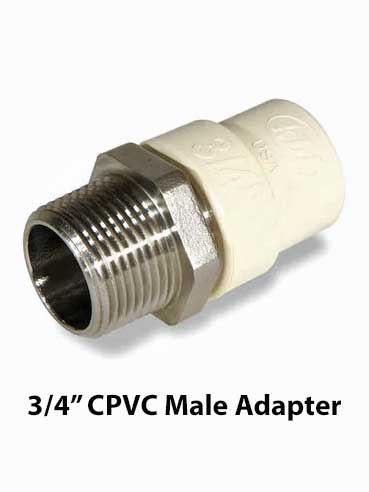slickrick
New Member
- Messages
- 8
- Reaction score
- 0
- Points
- 0
Questions for some pros:
1) On the copper to CVPC transition adapters that are out there, am I good to go simply using the "better" hot water system trans unions on both cold and hot water supply lines (vs the cheaper crap you can supposedly use for just cold water lines)? I'm going 3/4 copper to 1/2 CVPC for two new 15 foot runs through floor joists, so wanted some flexibility of material... other wise I'd have the torch out hands down.
2) I'm hearing that male threaded copper to CVPC transitions should be avoided all together. True? Any type/brand of transition that some pros like to work with? I want to make the least risky (and code compliant) transition, as my only future access will be through my living room ceiling.
3) General: Are the MIP and FIP threads on these copper to CVPC adapters the same as what I would call NPSM (National Pipe Straight Machine)? I wasn't sure if these were the same things, and/or if the transitions were tapered for the copper adaptation side of the fitting? What I did find... is that I have a shower valve with a 1/2 inch NPSM fitting on it's output port, and the 1/2 CVPC X 1/2 brass FIP transition thread does not seem to be a good machined fit - like it catches two threads and stops cold. I feel like something is up.
Hope my novice babble makes some sense.
Rick
1) On the copper to CVPC transition adapters that are out there, am I good to go simply using the "better" hot water system trans unions on both cold and hot water supply lines (vs the cheaper crap you can supposedly use for just cold water lines)? I'm going 3/4 copper to 1/2 CVPC for two new 15 foot runs through floor joists, so wanted some flexibility of material... other wise I'd have the torch out hands down.
2) I'm hearing that male threaded copper to CVPC transitions should be avoided all together. True? Any type/brand of transition that some pros like to work with? I want to make the least risky (and code compliant) transition, as my only future access will be through my living room ceiling.
3) General: Are the MIP and FIP threads on these copper to CVPC adapters the same as what I would call NPSM (National Pipe Straight Machine)? I wasn't sure if these were the same things, and/or if the transitions were tapered for the copper adaptation side of the fitting? What I did find... is that I have a shower valve with a 1/2 inch NPSM fitting on it's output port, and the 1/2 CVPC X 1/2 brass FIP transition thread does not seem to be a good machined fit - like it catches two threads and stops cold. I feel like something is up.
Hope my novice babble makes some sense.
Rick

